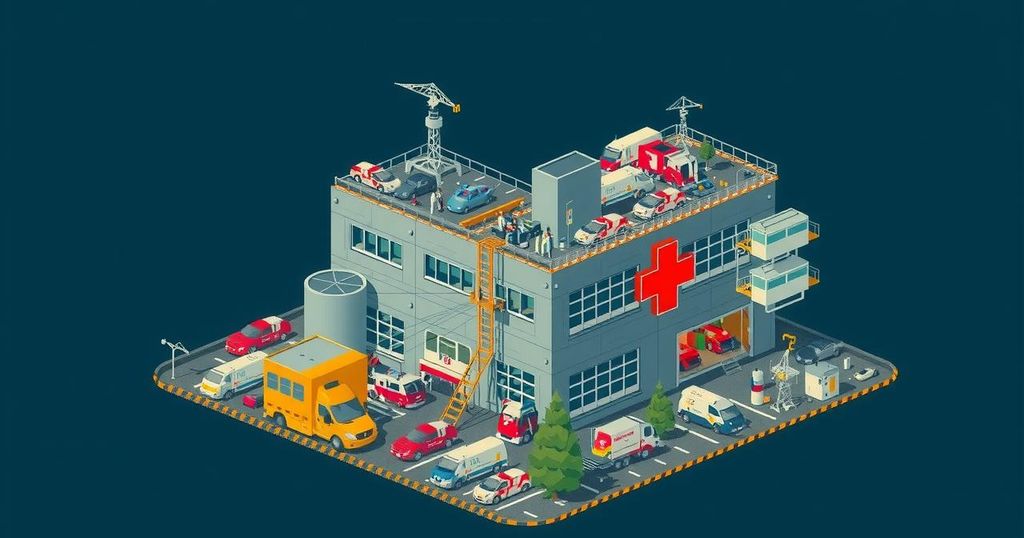Enhancing Hospital Preparedness Through Earthquake Early Warning Systems: Challenges and Insights
Research indicates that earthquake early warning systems (EEWS) can be instrumental in enhancing hospital preparedness; however, their success is significantly influenced by the effectiveness of existing safety protocols. Comprehensive preparation, including targeted communication strategies and regular drills, is necessary to maximize the benefits of these systems and ensure the safety of patients and staff during seismic events.
Earthquake early warning systems (EEWS) possess significant potential to enhance hospital preparedness during seismic events; however, their effectiveness hinges on the degree to which hospitals are prepared with comprehensive response protocols. Dr. Sandra Vaiciulyte, an interdisciplinary researcher from the Universidad Nacional Autónoma de México, highlights that in her recent analysis published in the International Journal for Disaster Risk Reduction, the efficiency of EEWS is contingent upon the existing seismic safety protocols within hospitals. Although countries such as Mexico have pioneered public early warning systems, including the Sistema de Alerta Sísmica Mexicano (SASMEX), many hospitals face challenges rooted in financial constraints and staffing limitations that inhibit the establishment of robust safety protocols. This lack of preparedness is particularly concerning as recent data has indicated the occurrence of earthquakes in 31 countries over the last five years, with Mexico experiencing notable casualties due to its seismic vulnerabilities. EEWS work by detecting initial seismic waves and sending alerts that can offer critical seconds or minutes to prepare for the impending shaking. However, the mere presence of an early warning system does not guarantee safety. For instance, there is a pressing need for hospitals to devise specific protocols tailored to various departments, as different units may face unique challenges when responding to alerts. To identify successful strategies in utilizing EEWS, Dr. Vaiciulyte has engaged with medical staff and disaster management experts through interviews aimed at uncovering insights into current practices and gaps in response. Barriers to applying early warning effectively include issues related to the delivery of alerts in hospital settings, where standard phone notifications may not reach staff in quiet zones. Customized methods of communication, such as visual alerts or loudspeakers, may improve response times and reduce panic among patients. Furthermore, there is a critical need for micro-protocols to enable timely protective actions, particularly in sensitive areas such as intensive care units or laboratories handling hazardous materials. Despite advancements in EEWS, the human element—how individuals respond during crises—remains unpredictable. Consequently, Dr. Vaiciulyte underscores the value of emergency drills in reinforcing preparedness and ensuring staff are equipped to follow protocols effectively. As a foundation for future studies, this qualitative research illustrates a range of preparedness practices in hospitals and stresses the importance of a multifaceted approach to disaster risk reduction. Such insights will prove invaluable in devising improved protocols that better integrate EEWS into hospital emergency frameworks, ultimately aiming to safeguard vulnerable populations during seismic events.
The integration of earthquake early warning systems into healthcare facilities represents a critical development in disaster preparedness. Historically, countries like Mexico have established advanced public early warning systems, yet the tangible application of these systems within hospitals is often complicated by economic and structural challenges. Research conducted by professionals in this field aims to explore not only the efficacy of these systems but also to determine the most effective ways hospitals can implement safety measures in response to seismic threats. This study sheds light on the importance of establishing comprehensive protocols that address the unique operational dynamics of emergency medical settings during earthquakes.
In conclusion, earthquake early warning systems have the potential to significantly enhance hospital safety during seismic events when coupled with strong preparation protocols. Dr. Vaiciulyte’s research emphasizes the necessity for tailored emergency responses that consider the specific needs of different hospital units. Moreover, effective communication strategies and regular emergency drills are essential to improve staff readiness and patient safety. The ultimate goal is to create a continuous knowledge base that informs best practices in disaster preparedness within healthcare facilities, safeguarding vulnerable populations in times of crisis.
Original Source: temblor.net




Post Comment